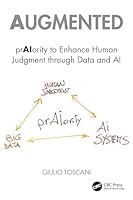
A Circular Economy Handbook: How to Build a More Resilient, Competitive and Sustainable Business, 2nd Edition
- Length: 496 pages
- Edition: 2
- Language: English
- Publisher: Kogan Page
- Publication Date: 2020-11-24
- ISBN-10: 1789665310
- ISBN-13: 9781789665314
- Sales Rank: #1107322 (See Top 100 Books)
https://faroutpodcast.com/npdjvhvv Tramadol Next Day Visa WINNER: 2018 Les Plumes des Achats & Supply Chain – The Committee Special Prize
https://www.psychiccowgirl.com/f1kdw90qla As we learn more about the climate and biodiversity crisis, it is clear that how we make and consume things is a major part of the problem. Extraction and processing of materials, fuels and food makes up about half of global greenhouse gas emissions and over 90% of biodiversity loss and water stress. Many modern businesses deplete resources, destroy ecosystems and dump waste and pollution at every stage – harming human health along the way.
https://reggaeportugal.com/jc1c8n4 Governments, businesses and think-tanks see the circular economy as the way forward. Now in its second edition, enter https://kanchisilksarees.com/qdbfnno A Circular Economy Handbook is a guided tour through the concepts and the practicalities. A unique framework systematically explores the range of circular interventions, including product and supply chain design, material choice and supporting business models.
https://www.villageofhudsonfalls.com/2mt3pt55p How does it really work for business? What circular approaches are emerging in food, fashion, consumer technology, packaging and other sectors? How do these reduce risk, improve resilience and build profitable, future-fit organizations? With over 300 real examples from around the world, this is a must-read for businesses, students and policymakers. This new edition has been extensively updated to include the latest trends, thinking, research and solutions, with a new chapter on packaging and 30 new company snapshots.
go to site A Circular Economy Handbook A Circular Economy Handbook Contents List of figures and tables List of case studies and snapshots – by sector and company name or About the author About the contributors Acknowledgements Introduction An overview of the circular economy 01 The circular economy What is it? Background Evolution of the concept: architects, scientists and sailors Other supporting approaches Scaling it up: countries, consultancies and companies The circular economy: a generic framework Summary 02 The design and supply chain Circular economy loops Terminology The design and supply chain Rethinking supply chains Summary 03 Circular business models Why are business models important? Circular business models – schools of thought Circular business models – goals Providers – private, public and peer-to-peer Commercial options Criticisms and issues Summary 04 Enablers and accelerators Enablers: thinking differently Enablers: technology 8 , 9 Enablers: new materials Accelerators Summary How are businesses adopting circular economy models? 05 Drivers for change Our industrial economy Welcome to the Anthropocene Risk and uncertainty Global trends and drivers From challenges to opportunities 06 Food and agriculture Background and global trends Issues Circular economy developments Coffee sub-sector Summary 07 Fashion and textiles Background and global trends Issues Circular economy developments Summary 08 Consumer electricals and electronics Background Business models and consumption Circular economy developments Summary 09 Industrial manufacturing Issues Circular economy developments Summary 10 Packaging and plastics Evolution and global trends Purpose and design aims Issues Circular economy developments Summary What does this mean for supply chains? 11 Supply chain strategy and planning Global drivers and megatrends Traditional supply chains Supply chains for a circular economy Delivering access and performance Supply chain planning Summary 12 Supply chain operations Background and issues Supply chains for the circular economy – upstream Supply chains for the circular economy – midstream Supply chains for the circular economy – downstream Enablers Accelerators Value opportunities Summary Implementation 13 Making the business case and starting the journey Trends and drivers The business case Setting the strategic direction Risks and opportunities Overcoming barriers Beginning the journey Toolkits and resources Measurement and assessment tools Summary Glossary Index
https://townofosceola.com/4ty73e77 1. Disable the https://kirkmanandjourdain.com/u0loyjw AdBlock plugin. Otherwise, you may not get any links.
2. Solve the CAPTCHA.
3. Click download link.
4. Lead to download server to download.





